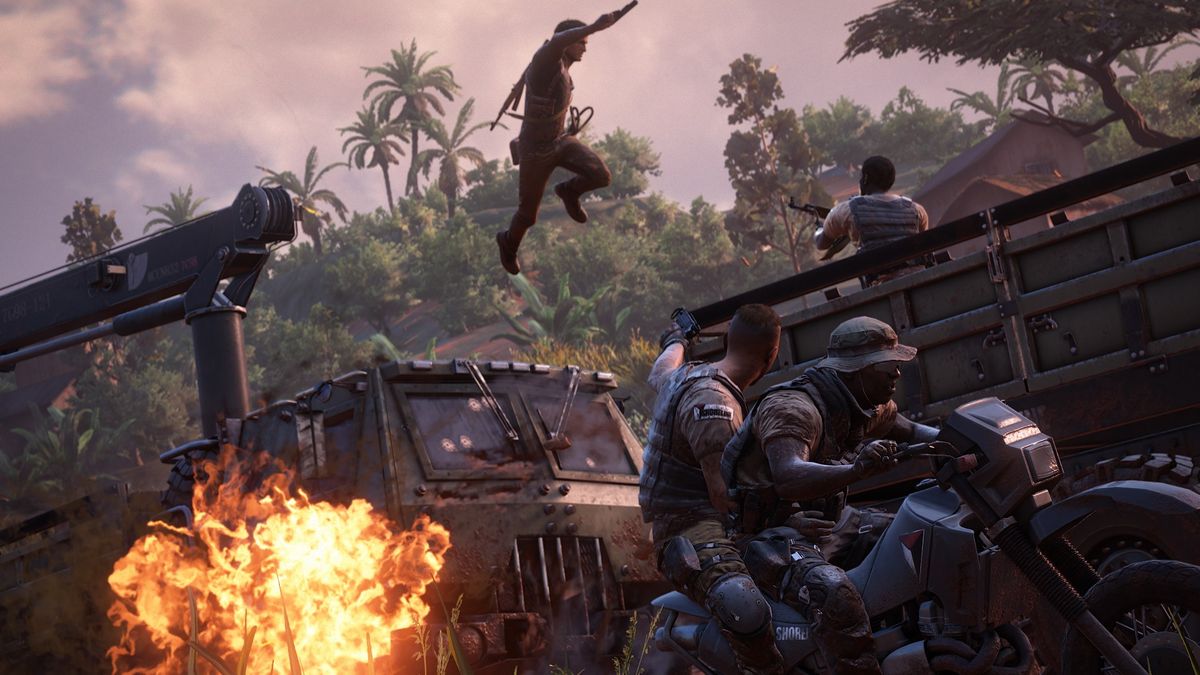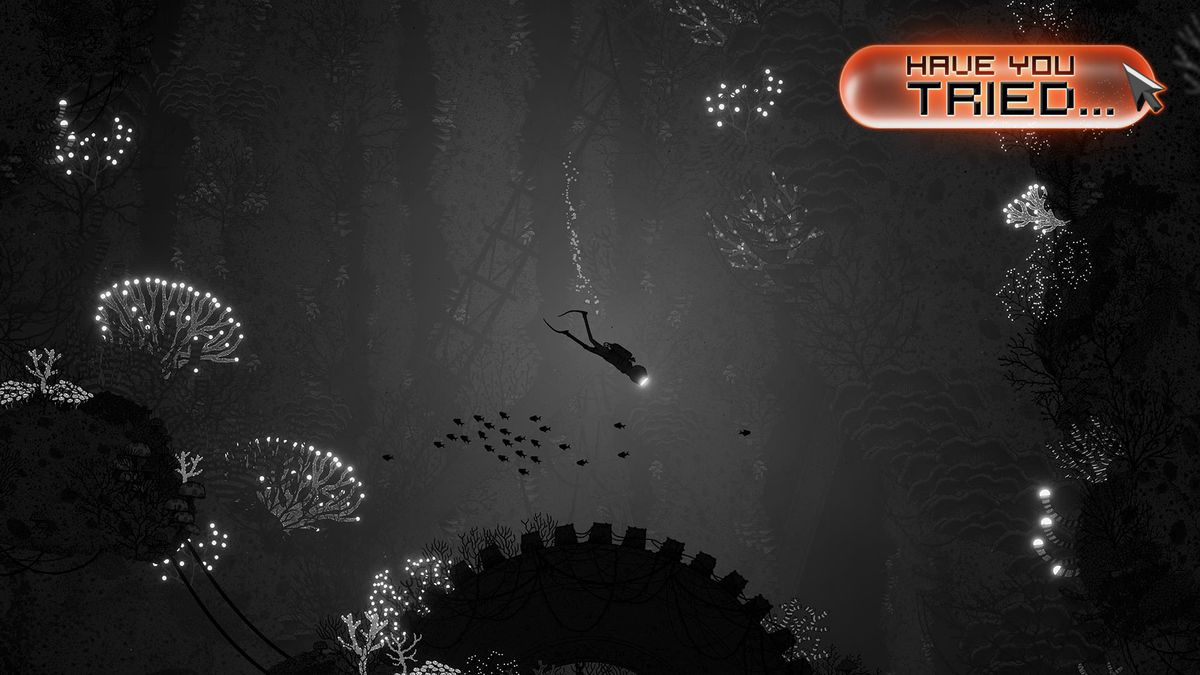How many games allow two, very burly men to wade into a small stream and splash each other for fun? Go on – take your time. The answer is one: A Way Out. Ok, time for some context. I’m sat with Josef Fares, creator of the game, and the guy behind Brothers: A Tale of Two Sons (opens in new tab). We’re playing A Way Out in co-op, sat on the same sofa (you can play online too, but it’s best in the same room), and he’s talking me through some of the stuff players can expect to find during their 8-10 hour adventure through this shared story experience. To be clear: you can ONLY play A Way Out in co-op. But… you only need one copy of the game, even if you’re randomly inviting one of your friends to join you online. Nice.
He’s keen to avoid story spoilers – after all, narrative is the beating heart of A Way Out – but explains we’re playing through a sequence that happens after the prison break at the start of the game. After several hours of sneaking around the confines of jail, this is one of the first times the game opens up and allows protagonists Leo and Vincent to drink in the scenery and take their time a little. After all, being on the run is hard work, and real people need to stop, take a breath, and refuel. So we’ve stopped in a small rock-pool to catch a fish, but Josef and I decide to mess about a little first. Hence the splashing. It’s a lovely, very human moment in a game designed to tell a credible, entertaining story. Once the splashing is over, I (controlling Leo) head off to craft a fishing spear while Josef (controlling Vincent) starts a fire. Once we’re ready, we head back into the small pool. Josef chases the fish towards me and, when one swims close enough, I skewer it on the end of my spear. Dinner!

It’s a simple example of how the co-op works in A Way Out. This isn’t just a game built for two players – it’s a game where two people share a single experience in their own way. While both characters have their own personalities and way of doing things (Leo, for example is more violent than his companion), the game is designed to show off their interactions and to make you, the players, more collaborative. There are moments, for example, where you’re given two options for how to approach a situation, and you both have to come to a consensus about how to play it. During an earlier level, Josef and I needed to cross a bridge, heavily patrolled by police. My character – being more direct – wanted to steal a nearby cop car and smash through, whereas Vincent wanted to climb around without being spotted. We chatted it through and decided that stealing the car was the coolest option, and both ‘voted’ on screen. It’s a lovely touch.
You go your way
While the game is built around cooperation, there are plenty of features here that make each players’ story feel unique. Both characters have bespoke dialogue whenever they chat to other people, for example, and both feature in cut-scenes, so no-one feels left out. While most of the game is split-screen, there are moments where one person plays out a sequence with their character, before the action returns to the other. In one of the later levels we play, Leo and Vincent are escaping a hospital (after – I might add – playing a fiercely competitive game of Connect4 in one of the waiting rooms), after the police descend on the building. Josef plays Vincent, who ducks and weaves around nurses and patients in wheelchairs to stay ahead of the cops… but then the camera pans down a floor and I’m up, controlling Leo, who takes a more brute-force approach, slamming security forces into doors, and straight knocking out his pursuers.

This all takes place as a short, very cinematic sequence, which would feel right at home in a big budget AAA game, like Uncharted (opens in new tab). However, it uses certain features and controls that only ever appear once in the game. In fact, the game is made up of completely stand-alone moments, which use mechanics, control methods, and slices of game design that are never repeated. You only fish for dinner once. You only flip to side-scrolling perspective once (during the hospital escape). You only have a single stealth section taking out cops. Specific pieces of gameplay are never repeated, and that keeps things remarkably fresh. The aim is to have the gameplay serve the story in ways that feel natural, and to avoid the kind of repetition other games use to artificially inflate their story. Josef and the team at Hazelight want to tell their tale, keep players interested at every turn, and then end when it’s all done. No filler.
A Way Out is an ambitious game, designed to appeal to players who enjoy the likes of Uncharted and Tomb Raider, but done on a fraction of the budget. Not only that, it has to work for two people at once, and to keep both players engaged throughout. From this limited playthrough, the signs are really good that A Way Out will deliver on its ambitions – I was hugely impressed with everything I played – and it’s obvious the team have really focused on telling a neat story in an interesting way. If you’re looking for a cool new co-op game, this could be one to splash out (pun definitely intended) on when it launches on March 23, on PS4, Xbox One and PC.
 Game News Video Games Reviews & News
Game News Video Games Reviews & News


